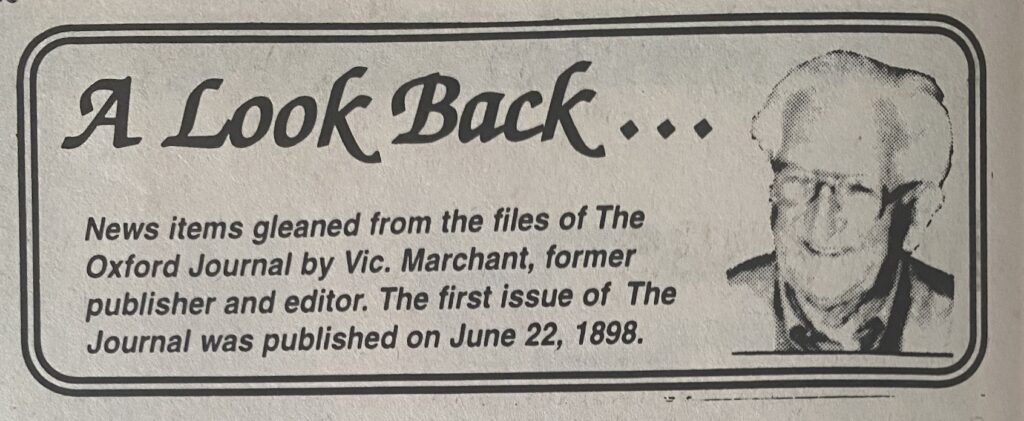
The following article regarding Oxford’s first fire engine is reprinted from the Nov. 15, 1951, issue of The Oxford Journal. It was written by Tommie E. Reid, who was a regular columnist in The Journal for over 20 years.
“The Empress of India” Was Oxford’s First Fire Engine
“The Empress of India’ was a grand old dame, a plain old body without frills, but oh, so very, very efficient. The name will strike no responsive chord in the memories of the present generation, but the older folk will remember the old steam fire engine with the impressive name, that for so many years represented practically our sole defence against the enemy of fire.
We knew she was the “Empress” for her name was affixed on a brass plate on each side of the cumbersome vehicle.
If my memory is correct, the huge piece of firefighting apparatus was purchased from the town of Pictou shortly after Oxford was incorporated as a town in 1904. It was a combination steam boiler, pumper and coal-eater, equipped with large steel-tired wheels, and even had a whistle to toot when sufficient steam had been generated. But above all the engine itself was lavishly decorated with shiny brass and copper, befitting the impressive Royal name “Empress of India”. It was an efficient piece of apparatus, well repaying in service the outlaying of the original purchase price.
It was a horse-drawn vehicle, and teams belonging to Elisha MacDougall, Wesley Black, Dan Keith, the Thompson families, etc., were utilized to take the Royal Old Lady to and from fires, or on parade, for we were all proud enough of the old girl to give her a place of honor in all the numerous parades and processions of years ago. For it was an impressive sight to all the youngsters of the town when the old fire engine came down the street with volumes of black smoke belching from the stack, and live coals dropping through the grates to the street, leaving a path bestrewn with danger for the many barefoot lads chasing the fire engine.
The “Empress of India” could not be properly classed as a member of the weaker sex, for she was powerful and strong, well fitted for the strenuous task confronting her, the quelling of fire, and she certainly did a lot of fighting in the years she ruled the roost as the principal portion of the Oxford Volunteer Fire Department.
We well remember the night in 1909, when the greater part of the Main Street business section was laid waste. From the post office next to the Trinity Church, down to the Henry Smith building where the Capitol Theatre now stands.
The fire swept along the street, taking Charlie Stewart’s house, A.S. Mackintosh’s drug store, the Oxford Paint Company, Peter Slade’s store, and the tailoring establishment of Alex (Tailor) Ross.
The fire was halted at the Henry Smith building, the old “Empress of India” perched on the wooden Black River bridge and faithfully pumping the river water through the lines of hose, being chiefly responsible for stopping the fire in its tracks.
As far as I can recollect, Billy Gay Thompson was the first engineer on the old fire engine, followed by Sam Siddall, Cleve Leslie, and stokers included all the Reid boys, Bill, Sandy and Tam. As mentioned at the start of this column, the old dame was a coal-eater and at a fire when the coal box became low, a few toots on the whistle would bring a new supply in a hurry, as the horse-drawn vehicles stood in readiness for such an emergency.
With the advance of motorized fire equipment, the old lady’s days as a fire-fighting unit were numbered, and eventually, she was dismantled, the old pump being installed on a Pierce-Arrow chassis, and thus Oxford’s fire department took the first step towards an entire motorized department. But, around the fire station, even today, you will see pieces of the old “Empress of India”, reminders of the past when the steam fire engine represented Oxford’s chief firefighting apparatus.
A grand old dame.
Readers are reminded that the article above was published nearly three-quarters of a century ago, when language and social mores were quite different from today. The content reflects the time and place in which it was published.



A fine article of an excellent piece of fighting machinery.
Comments are closed.